Refine search
Actions for selected content:
10307 results in History of science: general interest
CHAPTER I - THE CHALK FORMATION
- from BOOK II - SUPERMEDIAL ORDER
-
- Book:
- Outlines of the Geology of England and Wales
- Published online:
- 05 June 2015
- Print publication:
- 06 November 2014, pp 64-120
-
- Chapter
- Export citation
OUTLINES OF THE Biology of England and Wales
-
- Book:
- Outlines of the Geology of England and Wales
- Published online:
- 05 June 2015
- Print publication:
- 06 November 2014, pp lxxi-lxxii
-
- Chapter
- Export citation
Contents
-
- Book:
- Fred Sanger - Double Nobel Laureate
- Published online:
- 05 November 2014
- Print publication:
- 06 November 2014, pp vii-vii
-
- Chapter
- Export citation
4 - Interview of Fred by the author in 1992: Early life
-
- Book:
- Fred Sanger - Double Nobel Laureate
- Published online:
- 05 November 2014
- Print publication:
- 06 November 2014, pp 40-67
-
- Chapter
- Export citation
DESCRIPTION OF THE ANNEXED PLATE
-
- Book:
- Outlines of the Geology of England and Wales
- Published online:
- 05 June 2015
- Print publication:
- 06 November 2014, pp 473-474
-
- Chapter
- Export citation
BOOK I - SUPERIOR ORDER
-
- Book:
- Outlines of the Geology of England and Wales
- Published online:
- 05 June 2015
- Print publication:
- 06 November 2014, pp lxxiii-lxxiv
-
- Chapter
- Export citation
CHAPTER II - BEDS BETWEEN THE CHALK AND OOLITE SERIES
- from BOOK II - SUPERMEDIAL ORDER
-
- Book:
- Outlines of the Geology of England and Wales
- Published online:
- 05 June 2015
- Print publication:
- 06 November 2014, pp 121-166
-
- Chapter
- Export citation
BOOK II - SUPERMEDIAL ORDER
-
- Book:
- Outlines of the Geology of England and Wales
- Published online:
- 05 June 2015
- Print publication:
- 06 November 2014, pp 58-60
-
- Chapter
- Export citation
Chap. I - PRELIMINARY
- from BOOK I - SUPERIOR ORDER
-
- Book:
- Outlines of the Geology of England and Wales
- Published online:
- 05 June 2015
- Print publication:
- 06 November 2014, pp 3-10
-
- Chapter
- Export citation
Frontmatter
-
- Book:
- Fred Sanger - Double Nobel Laureate
- Published online:
- 05 November 2014
- Print publication:
- 06 November 2014, pp i-iv
-
- Chapter
- Export citation
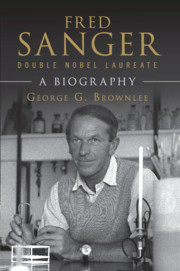
Fred Sanger - Double Nobel Laureate
- A Biography
-
- Published online:
- 05 November 2014
- Print publication:
- 06 November 2014
Sinanthropus in Britain: human origins and international science, 1920–1939
-
- Journal:
- The British Journal for the History of Science / Volume 48 / Issue 2 / June 2015
- Published online by Cambridge University Press:
- 03 November 2014, pp. 289-319
- Print publication:
- June 2015
-
- Article
- Export citation
The Arabic original of (ps.) Māshā'allāh's Liber de orbe: its date and authorship
-
- Journal:
- The British Journal for the History of Science / Volume 48 / Issue 2 / June 2015
- Published online by Cambridge University Press:
- 30 October 2014, pp. 321-352
- Print publication:
- June 2015
-
- Article
- Export citation
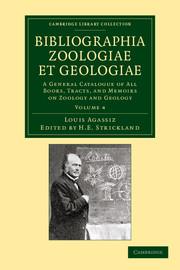
Bibliographia zoologiae et geologiae
- A General Catalogue of All Books, Tracts, and Memoirs on Zoology and Geology
-
- Published online:
- 05 October 2014
- Print publication:
- 04 July 2013
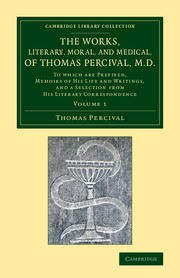
The Works, Literary, Moral, and Medical, of Thomas Percival, M.D.
- To Which Are Prefixed, Memoirs of his Life and Writings, and a Selection from his Literary Correspondence
-
- Published online:
- 05 October 2014
- Print publication:
- 21 November 2013
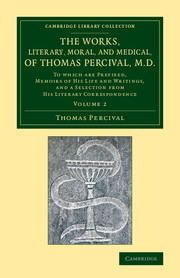
The Works, Literary, Moral, and Medical, of Thomas Percival, M.D.
- To Which Are Prefixed, Memoirs of his Life and Writings, and a Selection from his Literary Correspondence
-
- Published online:
- 05 October 2014
- Print publication:
- 21 November 2013
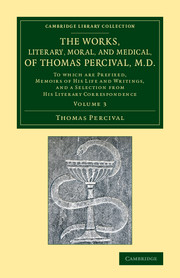
The Works, Literary, Moral, and Medical, of Thomas Percival, M.D.
- To Which Are Prefixed, Memoirs of his Life and Writings, and a Selection from his Literary Correspondence
-
- Published online:
- 05 October 2014
- Print publication:
- 21 November 2013

Memoir of the Life of Sir Marc Isambard Brunel
-
- Published online:
- 05 October 2014
- Print publication:
- 22 August 2013

The Works, Literary, Moral, and Medical, of Thomas Percival, M.D.
- To Which Are Prefixed, Memoirs of his Life and Writings, and a Selection from his Literary Correspondence
-
- Published online:
- 05 October 2014
- Print publication:
- 21 November 2013
X - Queries to the Opticks [1721]
-
- Book:
- Newton: Philosophical Writings
- Published online:
- 05 August 2014
- Print publication:
- 14 August 2014, pp 169-188
-
- Chapter
- Export citation
